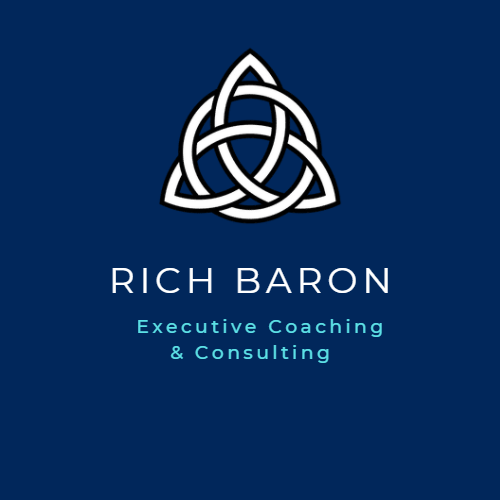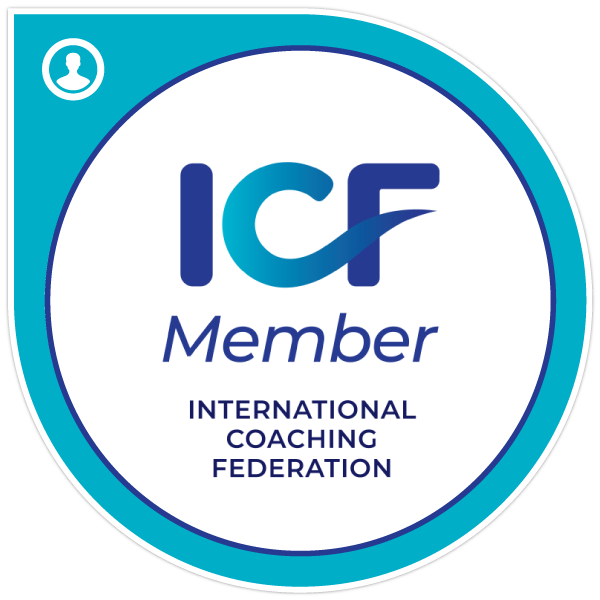Company Perks Are Not the Same as Company Culture
Rich Baron • March 29, 2024
Perks don't care if your employees are engaged or not
When you think of great company culture, you might envision state-of-the-art campuses with on-premises gyms, ping-pong tables and free catered lunches with a gourmet coffee bar. If this is how you envision good organizational culture, you wouldn't be alone. All these things are nice to have, but do these perks make a strong company culture? The simple answer is no.
The business world has conflated "perks and benefits" with "good company culture," with the assumption that perks are culture. While perks make for a nice bonus, they don’t matter if your employees hate how they feel at work.
Laying the Foundation
While amenities and perks can contribute to a positive work environment, a strong company culture goes beyond these superficial benefits. A truly strong company culture is built on values, beliefs, and behaviors that drive collaboration, innovation, and employee satisfaction. In short, good culture starts with a strong foundation. It is about fostering a sense of belonging, trust, and shared purpose among employees.
Some key components of a strong company culture include:
1. Clear values and mission:
A strong company culture is rooted in a clearly defined set of values and a compelling mission that employees can rally behind. This helps to create a sense of purpose and direction for everyone in the organization.
2. Employee engagement:
A strong company culture prioritizes employee engagement and feedback. It creates opportunities for employees to voice their opinions, contribute ideas, and participate in decision-making processes.
3. Transparent communication:
Open and honest communication is essential for a strong company culture. Transparent communication helps to build trust, foster collaboration, and ensure that everyone is on the same page.
4. Continuous learning and development:
A strong company culture values ongoing learning and development. It provides opportunities for employees to grow and develop their skills, and encourages a culture of continuous improvement.
5. Diversity and inclusion:
A strong company culture celebrates diversity and fosters an inclusive environment where employees from all backgrounds feel valued and respected.
Ultimately, a strong company culture is about creating a positive work environment where employees feel engaged, motivated, and supported. Culture is truly about the mindsets that are ingrained in the organization. It’s about how employees treat each other, the level of trust and communication within the company, and the overall sense of belonging and purpose. Company culture is what ultimately drives employee satisfaction, engagement, and productivity.
Some companies have a reputation for offering over-the-top perks in a bid to stand out from the competition and attract talent. While a game room for your employees or nap pods throughout the office may attract attention, employees are looking for perks that really matter to them and reflect their values. Listening to your employees can help your organization determine what they truly want from you.
Perks Done Right
Perks can help culture, and it's worth investing in the key perks that matter to employees, such as their health and the ability to be themselves at work. Wellbeing at work is about optimizing both mental and physical health, making your employees feel well-rounded and refreshed.
One such company that has truly excelled in the use of perks for the wellbeing of their employees is UFirst Credit Union in Salt Lake City, Utah. A colleague of mine, Dr. Mike Smith, and I had the recent privilege of working with CEO, Jack Buttars, and his executive team. All of whom have been with UFirst CU for several years. Each of them recounted how in their early years with the organization, they did not know from day to day if they would still have a job. One of the team even kept a cardboard box in their office so they could pack up their belongings in a hurry. The culture was toxic, the leadership was toxic, and there was a level of uncertainty and fear about their futures.
Because of their individual experience with the early years with this organization, they have collectively dedicated a significant amount of time to ensure the culture is one that is free from the concerns and fears that they personally experienced. After meeting with several of the employees, I can attest that the culture is one of engaged, dedicated people. As we toured the corporate office with Jack, each employee was greeted by name, and in turn, Jack was greeted with genuine enthusiasm as well. Not with the fear, or anxiety that I have witnessed in other organizations, but one of genuine respect and appreciation.
Now let’s talk about the perks and amenities at UFirst CU. I have toured several companies and very few have the perks, benefits, and amenities that UFirst has invested in. Each of the areas that we were shown had been developed and created around the wellbeing of their employees. Workspaces, break areas, healthy snack and food options, places to gather, the list goes on. UFirst CU is truly an example of a culture first organization where the perks have been put in place for their employees, not in lieu of culture, but a part of it designed for the well-being of the employees.
So, what types of perks can be beneficial to an already well-established culture. The following is a short list of perks and benefits that can truly sustain employee wellbeing:
1. Celebrating achievements:
Recognizing and celebrating individual and team accomplishments, milestones, and successes can boost morale and create a culture of appreciation and recognition. Acknowledging employees' hard work and accomplishments can boost morale and motivation. This can be through verbal praise, awards, or even simple gestures like a thank you note.
2. Flexible work arrangements:
Offering flexibility in work hours or remote work options can help employees manage their work-life balance better, leading to increased satisfaction and morale.
3. Professional development opportunities:
Providing employees with opportunities for learning and growth can make them feel valued and invested in their careers, boosting morale. This can include training programs, seminars, workshops, or even educational reimbursements.
4. Wellness programs:
Implementing wellness initiatives like fitness classes, mental health resources, or healthy snacks in the office can improve employees' overall well-being and morale.
5. Team building activities:
Organizing team-building events can strengthen relationships among coworkers, improve communication, and create a more positive work environment.
6. Incentives and bonuses:
Offering performance-based bonuses or incentives can motivate employees to work harder and achieve their goals, ultimately boosting morale.
7. Supportive management:
Having supportive and approachable managers who listen to and appreciate their employees can make a significant impact on morale. Open communication and a positive working relationship between managers and their team members can create a more positive work culture.
8. Opportunities for advancement:
Providing clear paths for career progression and growth within the organization can motivate employees to work towards their goals and increase morale.
9. Work-life balance initiatives:
Offering benefits such as paid time off, parental leave, or flexible scheduling can help employees manage their personal and professional lives, leading to higher morale.
10. Employee appreciation events:
Hosting events or activities to show appreciation for employees, such as a company picnic, holiday party, or a team outing, can boost morale and strengthen the sense of belonging within the organization.
To truly build a positive company culture, leaders must focus on fostering open communication, providing opportunities for growth and development, recognizing great talent, celebrating achievements, and creating a supportive and empathetic work environment. These elements are essential for creating a culture where employees feel valued, respected, and motivated to do their best work.
Wrapping Up
While perks and benefits can enhance the employee experience, they are not the foundation of a strong company culture. To create a positive and thriving work environment, organizations must prioritize building a culture that is based on trust, respect, and genuine care for their employees.
By focusing on creating a positive company culture, organizations can cultivate a sense of community, loyalty, and engagement among employees. This, in turn, can lead to higher employee retention rates, increased productivity, improved teamwork, and ultimately, greater business success.
So, while perks and benefits are nice to have, they are not the key to building a truly great company culture. However, if the culture is toxic, and the engagement level of the employees is non-existent, the senior team can take turns at the ping-pong table while sipping on the gourmet coffee before deciding who gets to turn the lights off. Think about it!
Are you interested in great organizational culture? Reach out to me here.
About the Author
Rich Baron serves as the Chief Operating Officer and Director of the Global Coaching Project at John Mattone Global, where he also holds the title of Master Certified Intelligent Leadership Executive Coach. With over 30 years of rich experience in cultural transformation, operational leadership, executive roles, and coaching leaders at every level—from emerging talents to seasoned CEOs—Rich has a demonstrated track record of success.
Rich co-hosts "Mainline Executive Coaching ACT," a podcast that is recognized by Feedspot as the leading Executive Coaching Podcast worldwide. The podcast's acclaim is based on an evaluation of numerous factors, including web traffic, social media followers, and timeliness. It boasts an impressive following in more than 85 countries and over 850 cities globally.

The First World War, occurring from 1914 to 1918, brought unprecedented destruction and violence. The impact of the First World War, in particular, forever transformed the nature of war. This conflict witnessed the deliberate targeting of civilians, the widespread use of chemical weapons, and the introduction of mechanized warfare on a large scale. The death toll reached a staggering 22 million people, with some accounts putting the toll closer to 37 million. However, amidst the chaos and brutality of the First World War, a brief and remarkable moment of peace unfolded on Christmas Day in 1914. It Will Be Over by Christmas Many of the 60 million soldiers sent to fight in the First World War were told that the war would be over by Christmas—a promise that turned out to be yet another falsehood in a conflict plagued with deception and misinformation. After war was declared in July 1914, it became clear by Christmas of that year that there was no end in sight. The Western Front was dotted with trenches, where millions of soldiers were packed together, enduring freezing conditions. Many of these soldiers were astonishingly close to their enemies, with the British and German trenches sometimes separated by a mere 30 meters. According to Daniel Coyle in his best-selling book “The Culture Code”, soldiers on both sides, because of proximity to each other, started noticing shared patterns of behavior and routines of cooking, re-supply, and troop rotations. Deepening the connection was the realization that both sides were enduring the same terror and stress of harsh conditions. On the late hours of Christmas Eve, German troops started opening gifts that they had received from home, including Christmas trees adorned with candles. The soldiers lit their lanterns and placed them along the edges of their trenches, creating a warm and festive atmosphere. As the candles flickered, the sound of carol singing resonated through the air. A Personal Account Bruce Bairnsfather, a British machine gunner who would later become a well-known cartoonist, vividly described the scene in his memoirs. Like his fellow infantrymen from the 1st Battalion of the Royal Warwickshire Regiment, Bairnsfather spent Christmas Eve shivering in the muddy trenches, desperately trying to keep warm. Having fought against the Germans for the past few months, he found himself in the Bois de Ploegsteert region of Belgium. In this unforgiving environment, Bairnsfather, cramped in a trench only three feet deep and three feet wide, faced constant sleeplessness and fear. His days and nights were filled with the repetitive cycle of anxiety, surviving on stale biscuits and cigarettes too damp to light. At about 10 p.m., Bairnsfather noticed a noise. “I listened,” he recalled. The Germans were singing carols, as it was Christmas Eve. The British soldiers in the trenches joined in by singing back. Amid this peaceful moment, a surprising occurrence unfolded. Bairnsfather and his comrades heard a bewildered shouting from the German side, causing them to pause and listen intently. The voice belonged to an enemy soldier who spoke English with a distinct German accent, calling out, "Come over here." In a remarkable turn of events, the British and French troops, inspired by the Germans, also participated in the Christmas truce. Fear and suspicion were set aside as soldiers began to exchange greetings and well-wishes between the trenches. Offers for a temporary ceasefire were communicated and accepted. With the dawn of Christmas morning, soldiers cautiously stepped out into no man's land. They greeted one another and engaged in an awe-inspiring display of humanity. Messages and gifts were shared as soldiers from opposing sides momentarily set aside their enmity. In some areas, caps and jackets were repurposed as goalposts, leading to impromptu and joyful football matches. It is even said that the Germans emerged victorious in one of these games with a final score of 3-2. Another British soldier, named John Ferguson, recalled it this way: “Here we were laughing and chatting to men whom only a few hours before we were trying to kill!” The temporary cessation of fighting continued in certain areas until the arrival of the New Year, but ultimately, the pause proved to be brief and the peace was short-lived. Although there were several other instances of similar truces during the war, none were as widespread or significant as the Christmas truce of 1914. Disapproval from Senior Leaders As expected, certain high-ranking officers on both sides viewed the Christmas Truce with disapproval. They issued orders explicitly forbidding any association with the enemy and warned of potential punishments for those who disobeyed, even execution for cowardice by firing squad for those who attempted to start another truce. However, the soldiers, who were already weary from the war (unaware of the years of continued fighting ahead), chose to take matters into their own hands. They defied the orders and acted independently to establish moments of peace, albeit temporary, amidst the turmoil of war. In an alternate account, it is reported that a German soldier named Adolf Hitler reprimanded his comrades during the Christmas Truce, expressing his disapproval by stating, "Such a thing should not happen in wartime. Have you no German sense of honor left?" Hitler, who was 25 years old at the time, conveyed his disdain for the temporary ceasefire. What Can We Learn as Leaders If enemies on the battle lines can create a culture of safety, respect, and belonging even during war, it suggests that similar conditions can be replicated within organizations. And indeed, there are ways to achieve this. According to Coyle, organizations that foster a strong sense of belonging can address the following questions to ensure a positive response from employees: 1. Are we connected? - Encourage open communication and collaboration among team members. - Foster a sense of unity and shared purpose. 2. Do we share a future? - Clearly, and often, communicate the organization's vision, mission, and goals. - Involve employees in decision-making processes to create a sense of ownership and shared commitment. 3. Are we safe? - Promote a culture of psychological safety where employees completely trust that the organization is a safe place to give 100% while expressing their opinions and taking risks. - Establish policies and practices that prioritize employee well-being and physical safety. To ensure a resounding "YES" to these questions, it is crucial to clearly and consistently communicate the organization's vision, mission, and goals. This can be achieved by: Communicate the purpose: An effective approach to communicate your organization's purpose is by using concise messaging throughout. Avoid using overly complex statements that potential employees may struggle to understand or feel apprehensive about living up to. Articulating the vision: Communicate the long-term aspirations and purpose of the organization. This overarching vision should inspire and provide a sense of direction for all employees. And that they are a crucial part of achieving the vision. Define the mission: Clearly define the organization's mission statement, which outlines its core purpose, main activities, and the value it delivers to its stakeholders. Regularly reinforce this mission to remind employees of the organization's primary focus. My Key Takeaways The Christmas Truce offers valuable lessons about leadership and culture that can be applied in various contexts. Although this event took place over 100 years ago, the lessons we must learn from those brave soldiers are still relevant today. So here are a few of my thoughts and key takeaways: 1. Leaders Set the Tone: The temporary ceasefire during the Christmas Truce was driven by individual soldiers who took the initiative to establish peace. This highlights the importance of leaders setting the right tone and creating an environment that encourages positive actions and behaviors. 2. Humanize the "Enemy": The soldiers involved in the truce showed empathy and compassion towards their supposed enemies. This serves as a powerful reminder that seeing the humanity in others, even in challenging circumstances, can foster understanding and connection. 3. Facilitate Connection and Communication: The Christmas Truce exemplified the power of connection and communication across divides. Leaders should create opportunities for open dialogue, collaboration, and relationship building, fostering a sense of community and common purpose. 4. Encourage Empathy and Respect: The truce demonstrated the significance of empathy and respect in promoting peaceful interactions. Leaders can cultivate these qualities by emphasizing the importance of understanding different perspectives and treating others with dignity and respect. 5. Boldly Challenge Norms: The soldiers who participated in the truce defied the established orders and norms, highlighting the potential for positive change when individuals challenge the status quo. Leaders should encourage everyone in their organizations to think differently and think big. Wrapping Up Even in today's world, the lessons from the Christmas Truce of 1914 remain pertinent. Individuals, regardless of their political beliefs and ideologies, will unite with their families to celebrate the birth of Jesus Christ, who symbolizes peace and salvation. It is a day when we commit ourselves to acts of generosity and spreading kindness to those around us. Afterward, instead of going back to our organizational trenches and shooting at each other verbally from within our siloed walls, we should stay in the “no man’s land” of compromise and conciliation and continue to find solutions to common problems. Like the soldiers in the Christmas Truce, we should make the spirit of goodwill at Christmas last more than one day. By consistently prioritizing and nurturing these elements year-round, organizations can create a culture that fosters a strong sense of belonging, ultimately leading to increased engagement, productivity, and overall organizational success. I wish you all a Merry Christmas and Happy Holidays. Thank you for your continued support and I wish you all the best for the coming new year. About the Author Rich Baron is the Chief Operating Officer and Director of Global Coaching Projects at John Mattone Global (JMG) and a Master Certified Intelligent Leadership® Executive Coach. He partners with C-level leaders and high-potential executives around the world to strengthen trust, elevate culture, and drive sustainable transformation. Rich leads large-scale coaching and cultural initiatives across multiple regions and industries, and serves as a strategic bridge between executive teams, HR, and global coaching networks. He is also the co-host of the Mainline Executive Coaching ACT podcast, recognized as one of the top executive coaching podcasts globally, where he explores the real-world challenges and opportunities facing today’s leaders. Through his work, Rich is dedicated to CHANGING THE WORLD One Leader, One Organization at a Time® by helping leaders move beyond performance and build the inner architecture required to become world-class executives.



